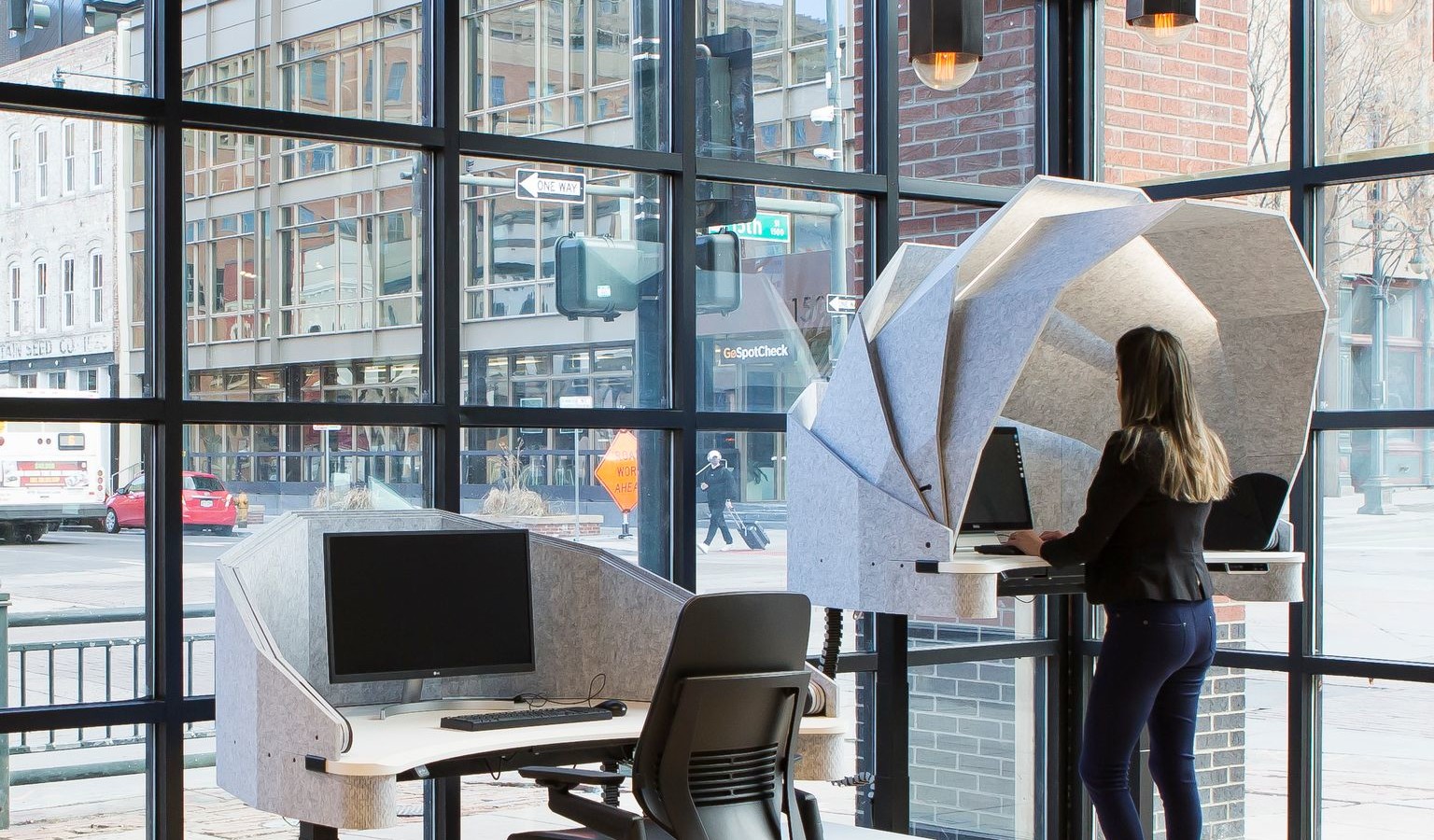As companies begin to map out their return to the office, employers will be forced to rethink traditional workplace design. Prior to the global pandemic, emerging companies, like WeWork, popularized the open office setting, encouraging an open flow of ideas and eliminating hierarchies defined by the size and location of employee offices. The pandemic has reshaped our view of remote working and the open office landscape as we know it and the pressure is on for employers to innovate to get employees back into the office in a safe and efficient way.
Recent research shows that remote work has contributed to an increase in productivity for workers. To maintain the momentum, the question becomes; How do business leaders replicate work from home conditions to foster improved performance while providing employees with the peace of mind that comes with a safe and healthy work environment?
Moving into the latter half of 2021 and beyond, these are some factors employers will need to consider to promote safety and productivity in an open office setting.
Ensuring Employee Safety through Social Distancing and Sanitization
Most office spaces, especially in major metro areas, were designed to maximize the square footage, packing employees into a small space for cost efficiency. Commercial real estate comes with a high price tag, and even the most lucrative business has to be mindful of its overhead costs.
Even with a hybrid approach of staggering which days employees come into the office, the open office structure just isn’t feasible to stay compliant with guidelines laid out by the CDC. Firms such as building owner and operator Cushman & Wakefield are sharing their vision to accommodate the new spacing requirements. The company built a video concept for the “Six Feet Office,” which highlights desk spacing, foot traffic routing and other initiatives such as the use of disposable “deskpads.” These options are costly for businesses with many requiring additional buildout or an office move.
In addition to socially-distanced workspaces, business owners will need to completely revamp cleaning procedures, including more frequent disinfection of high touch surfaces. Additional adjustments to align with updated hygiene standards may include:
- Clean desk policies will likely be required.
- Office spaces with open windows for natural air flow and ventilation will be sought after.
- The incorporation of UV light cleaning products that can disinfect tablets, phones, personal items, ID badges and other frequently touched items. Even the HVAC system might employ UV light to kill any pathogens.
Maintaining Productivity
There’s little respite from the sounds of the open office. Studies have shown that noise takes a toll on workplace productivity, up to 40 percent. The noise level in an open office—including printers, computers, ventilation, people coming and going and conversation—tracks at about 65 decibels. For comparison, a vacuum cleaner is 69 decibels, and it’s impossible to make an effective sales call while one is running. This level of noise can impact reading comprehension and memory, contribute to mistakes, decrease productivity, increase stress, lower job satisfaction and harm morale.
A survey found that music and understandable human speech are the most distracting types of noise. There’s no such thing as a private phone call in the open office, and our brains go into overdrive when we hear half of a phone conversation. We must try to fill in the other half, and it’s hard to concentrate, let alone do your best work, when you’re writing dialogue in your head.
Fortunately, it’s easy to absorb some of the sound by simply reducing hard surfaces for sound to bounce off. These hard surfaces include flooring, windows, walls, glass conference room tables and more. The key is to add porous, fibrous materials that absorb sound and prevent echo. This might be in the form of fabric, wool, foam or felt ceiling panels, wall hangings, movable wall systems, tiles, carpets and drapes. Even plants can help absorb sound. But if these solutions aren’t thoughtfully incorporated into an original office design, they can be expensive and unnatural add-ons.
MojoDesk, a leading manufacturer of standing desks recently released MojoDome, a workstation to eliminate echo and decrease background noise for professional sounding video and phone calls. The bundled desk and dome are purpose-built to offer privacy and a focused work environment with less distractions. The timing aligned well as it now has the added benefit of providing a physical barrier between employees for built-in social distancing. MojoDome was also designed with ergonomics in mind as the desk can move from a sitting height to a standing height with the push of a button, so employees can stretch their legs or take a break by sitting.
Promote Healthy Habits
With a global focus on health comes heightened awareness surrounding overall wellbeing. We’ve seen an influx in demand for sit-to-stand desks as employees realize just how much time they’ve been slumped over at their desk, causing aches and pains in addition to the burnout that comes with working just steps away from a living space. A study found that call center employees who used a sit-to-stand desk were 46 percent more productive than their colleagues using traditional desks.
Research shows the most productive employees take frequent breaks to work smarter, not harder. Working remotely naturally lends itself to more breaks throughout the day, so I see this as behavior business leaders will want to replicate upon the return to the office.
The Takeaway
As we reach the one-year milestone of the pandemic, we’re forced to reimagine the future of living and working. The open office has been long overdue for a makeover, and COVID-19 has accelerated our plans to adapt. Business leaders have a responsibility to rethink the work environment and its footprint for years to come.


